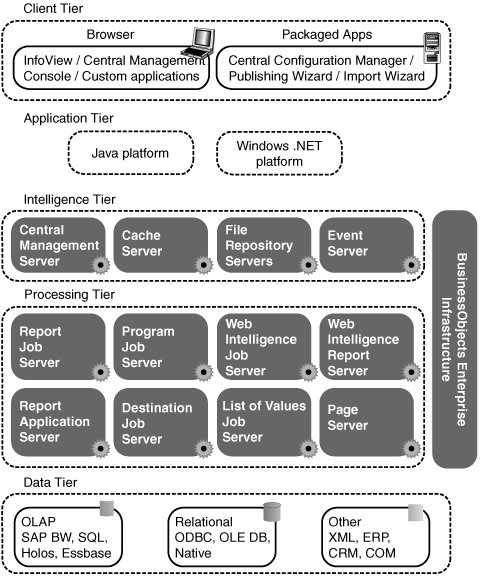BusinessObjects Enterprise Architecture Overview
| At the highest level, BusinessObjects Enterprise has four main tiers: the client tier, application tier, BusinessObjects Enterprise Server tier, and database tier (see Figure 25.1): Figure 25.1. The client, application, server, and data tiers compose an enterprise business intelligence infrastructure.
With a high-level understanding of the role of the client, application, server, and database tiers, you now consider each one in depth. |
EAN: 2147483647
Pages: 365
- Challenging the Unpredictable: Changeable Order Management Systems
- The Second Wave ERP Market: An Australian Viewpoint
- Enterprise Application Integration: New Solutions for a Solved Problem or a Challenging Research Field?
- The Effects of an Enterprise Resource Planning System (ERP) Implementation on Job Characteristics – A Study using the Hackman and Oldham Job Characteristics Model
- Data Mining for Business Process Reengineering
- Integration Strategies and Tactics for Information Technology Governance
- Linking the IT Balanced Scorecard to the Business Objectives at a Major Canadian Financial Group
- Measuring and Managing E-Business Initiatives Through the Balanced Scorecard
- Technical Issues Related to IT Governance Tactics: Product Metrics, Measurements and Process Control
- The Evolution of IT Governance at NB Power
